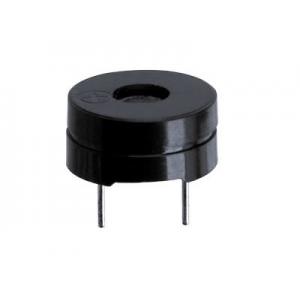
Add to Cart
AC type 2048Hz Φ12*5.4mm electronic magnetic buzzer for door bell
Description:
Buzzer is a signaling device that is not a loudspeaker. It can be mechanical, electromechanical, or electronic (a piezo transducer).
When a lower frequency is required, an electromagnetic buzzer can fill the need. These are very common in automotive chimes and higher end clinical diagnostic devices. The electromagnetic buzzer generally consists of a plastic housing with a metal diaphragm that is flexed by an electro- magnet. The main benefit of this design is the ability to obtain low frequencies in a small package. Drawbacks include mechanical wear, electrical noise, lower sound output, and large power consumption.
Application:
It is widely used in computers, printers, photocopiers, alarms, electronic toys, automotive electronic devices, telephones, timers and other electronic products for voice devices.
Specifications:
| Type | Unit | 12054W01 | 12054W03 | 12054W05 |
| Rated voltage | V | 1.5 | 3 | 5 |
| Operating voltage | V | 1-4 | 3-6 | 4-8 |
| Rated current | mA | ≤30 | ≤30 | ≤30 |
| Coil resistance | Ω | 8±2 | 16±4 | 42±6 |
| Sound output at 10cm | dB | ≥80 | ≥80 | ≥80 |
| Resonant frequency | Hz | 2048 | ||
| Operating temperature | ℃ | -20~+70 | ||
| Storage temperature | ℃ | -30~+80 | ||
| Weight | g | 2 | ||
Difference between active and passive:
An active buzzer has a built-in oscillating source, so it will make sounds when electrified. An active buzzer can be connected just like an LED, but as they are a little more robust, you won’t be needing a resistor to protect them.
Precautions for use:
• Do not apply DC bias to the buzzer; otherwise insulation resistance may become low and affect the performance.
• Do not supply any voltage higher than applicable to the buzzer.
• Do not wash the buzzer with solvent or allow gas to enter it while washing; any solvent that enters it may stay inside a long time and damage it.
• Do not place any shielding material or the like just in front of the sound release hole of the buzzer; otherwise the sound pressure may vary and result in unstable buzzer operation. Make sure that the buzzer is not affected by a standing wave or the like.
• Avoid using the buzzer for a long time where any corrosive gas (H2S, etc.) exists; otherwise the parts or sound generator may corroded and result in improper operation.
• Be careful not to drop the buzzer.
Dimension: (mm)
Tolerance: ±0.5

Frequency response:
